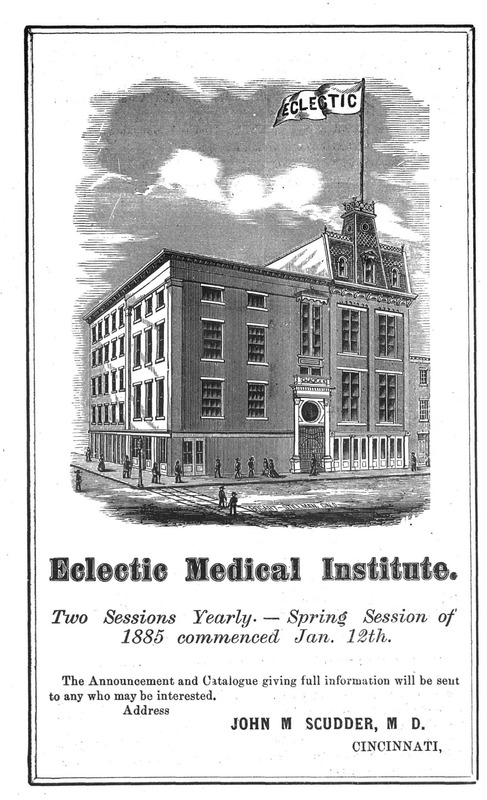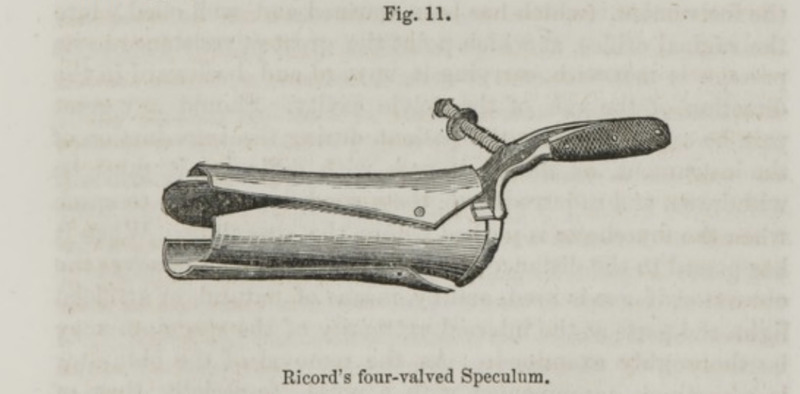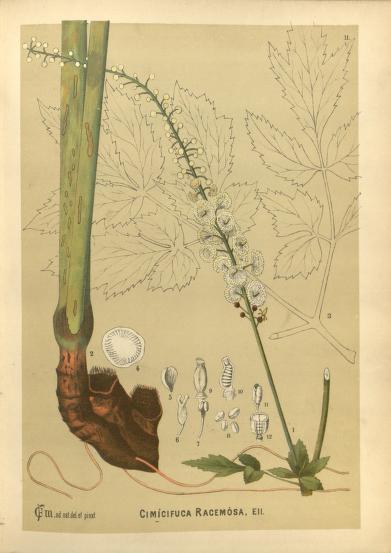What Was Eclectic Medicine?
"We, therefore, claim to be Eclectic, among other reasons, because we reject, more especially, the well-known evils of other systems, and adopt that portion of their good," John King, MD
"The great principle upon which Eclecticism is based, is: that disease, wherever met, and in whatever form manifested, is an impairment of vitality; that causes of disease are depressing, and whilst they exist, lower vital power. The corollary from this is: that all agencies employed in the treatment of disease should add in
one of two ways:
removing the depressing cause, and increasing the vital powers for better resistance and subsequent restoration of structure and function. Guided by these principles we discard all those remedies and means which have been classified as antiphlogistic. We not only reject bleeding, the use of mercurials, of antimony, etc.,but include as well, the abuse of emetics, cathartics, diaphoretics and diuretics. It is not sufficient to say that we object to killing the sick by blood-letting and mercury, but we object to any remedy or agency when employed upon the same principle, and which impairs the power of resistance to disease, and
restoration to health."
John Scudder, MD
In the Gilded Age, roughly 1870 to the early 1900s, Eclectic medical schools had already been established from New York to California. These schools were proprietary and not usually affiliated with academic centers or hospitals. The most successful in producing eclectic physicians and the focus of this website was the Eclectic Medical Institute of Cincinnati. How were the eclectic medical schools different from traditional medical schools, known as allopathy?
Compared to traditional medical schools, the most considerable difference was the use of plant-based medicines, usually American plants, to assist with diseases and treatment of processes, like giving birth or postpartum bleeding. These plant-based treatments were considered more natural to restore vitality to patients and supposedly derived from indigenous knowledge of the plants in the Americas.
Eclectic Medicine was a branch of medical thought started initially by an allopathic trained physician, Wooster Beach, who began teaching Reformed Medicine in 1825.[1] Reformed medicine and eclectic medicine were the same. They rejected bleeding and Thomsonianism theories while stating they adopted botanical plants that worked and proven therapies of other branches of medicine. [2]Homeopathic medicine with herbal treatments was not discounted but instead incorporated.
Of course, knowledge was still very limited in medicine, and eclectic physicians were very much a product of those limitations. The plants they used were sometimes poisonous and considered quack medicine by many. It wasn’t until the turn of the century that the school increased the curriculum and requirements to graduate. Eclectic physicians were alternative physicians but definitely not homeopaths. But they were closer to homeopaths than regular physicians and considered themselves a "medium system." The textbooks on anatomy and surgery contained the same information as traditional medical schools of the time. Surgery especially was the same as regular medical schools with the caveat that they would only resort to it when all else had failed. The same went for intervening in the birth of a baby, and they called themselves accoucheur, or male midwife. The difference in their medical textbooks on women was the addition of large doses of plants and compounds. There was a closer relationship between eclecticism and homeopathy than most realized. James Tyler Kent, the medical doctor who took homeopathy and made it into a religious cult in the late 19th and early 20th century was a graduate of the Eclectic Medical Institute. This period of American homeopathy was known as "Kentianism." (Haller, 2022).
Dr. John King was a prominent eclectic professor and wrote several of the textbooks for the Eclectic Medical Institute. These plants and treatments are described in a large textbook authored by him, called the American Eclectic Dispensatory. He was a professor of obstetrics and gynecology and wrote many texts on female disease and obstetrics. These cases in this website are three examples of how eclectics treated patients and how much it cost. These are late in his career and by this time there was a pharmacy run by the Lloyd Brothers to make his compounds. [3]
The Eclectic Medical Institute supplied physicians to rural areas and cosmopolitan areas. It was in existence from 1845 to 1939, but its heyday was during the Gilded Age. More women graduated from this medical school than traditional medical schools, but the numbers were still small. The National Association of Eclectic Physicians was similar to the American Medical Association, with conferences and journals sharing cases and treatments. This website is just a small sample of Dr. John King’s casebook of patients and a brief overview of female conditions and treatment. Women physicians were more in number from this medical school than others, but these physicians that were treating women's sexuality and hysteria were not unlike regular physicians of the time. This is strictly a tiny focused exhibit on female patients in the Gilded Age and examples of plants used then.
I would like to thank Professor Haller for the information and feedback on this page.
Disclaimer: DO NOT TRY THESE PLANTS AT HOME NOR THESE CONCOCTIONS!. Many are poisonous!


